Are you planning a trip to Chile and wondering about safety? It’s a valid concern for any traveler. With SIXT.VN, you can explore Chile with confidence, knowing you’re well-informed and prepared. This guide dives deep into safety aspects for travelers in Chile, covering everything from city safety to natural disaster preparedness, ensuring a smooth and secure travel experience. We help you navigate Chile safely with updated travel advice, trustworthy tips, and solutions for a memorable adventure.
1. Is Chile Safe for Travel? An Overview
Yes, generally, Chile is considered one of the safest countries in Latin America, but like any travel destination, it requires awareness and caution. According to the Global Peace Index, Chile consistently ranks high in safety compared to its regional neighbors. While petty crime exists, especially in urban areas, violent crime rates are relatively low. Here’s a comprehensive look at how you can ensure a safe trip to Chile.
1.1. Safety Statistics and Rankings
Chile stands out as one of the safest countries in Latin America, a reputation supported by various safety indices and reports.
-
Global Peace Index (GPI): Chile consistently ranks among the top countries in Latin America on the GPI, which measures the level of peace and safety in a country based on factors like crime rates, political stability, and international relations.
-
Low Homicide Rates: According to data from the United Nations Office on Drugs and Crime (UNODC), Chile has historically maintained lower homicide rates compared to other countries in the region.
-
Tourist Safety: The Chilean government prioritizes the safety of tourists, and there are dedicated police units and resources aimed at assisting visitors.
While these statistics paint a positive picture, it’s essential to stay informed about current events and any potential changes in safety conditions.
1.2. Common Concerns and Misconceptions
Many travelers have misconceptions about safety in Chile due to limited information or exaggerated media reports. Here are some common concerns and clarifications:
-
Concern: Chile is prone to earthquakes, making it unsafe.
- Reality: Chile is indeed located in an active seismic zone, but the country has strict building codes and disaster preparedness measures in place. Earthquakes are a part of life, and Chileans are well-prepared to handle them.
-
Concern: Petty theft is rampant, making it unsafe to carry valuables.
- Reality: Petty theft, such as pickpocketing and bag snatching, can occur, especially in crowded tourist areas. However, these incidents are preventable with basic precautions like keeping valuables out of sight and being aware of your surroundings.
-
Concern: Certain neighborhoods are dangerous, making it unsafe to explore.
- Reality: Like any major city, some neighborhoods in Chile have higher crime rates. However, most tourist areas and popular attractions are generally safe, especially during the day. It’s advisable to research and avoid known high-crime areas.
-
Concern: Civil unrest makes it unsafe to visit Chile.
- Reality: While Chile has experienced occasional civil unrest in the past, the country is generally stable, and protests are usually confined to specific areas. Stay informed about current events and avoid protest zones, but don’t let this deter you from visiting.
By addressing these concerns and misconceptions, travelers can make informed decisions and enjoy a safe and enjoyable trip to Chile.
1.3. Cultural Considerations and Etiquette
Understanding local customs and etiquette is essential for ensuring a safe and respectful travel experience in Chile. Here are some cultural considerations to keep in mind:
- Greetings: When meeting someone for the first time, it’s customary to shake hands. Close friends and family members may greet each other with a kiss on the cheek.
- Dining: In Chile, it’s considered polite to wait for everyone to be served before starting to eat. Tipping is customary in restaurants, usually around 10%.
- Public Behavior: Chileans value politeness and respect in public spaces. Avoid loud or disruptive behavior, and be mindful of others around you.
- Language: While many Chileans in tourist areas speak English, learning a few basic Spanish phrases can go a long way in showing respect and facilitating interactions.
- Dress Code: Dress codes in Chile are generally casual, but it’s advisable to dress modestly when visiting religious sites or attending formal events.
Being aware of these cultural considerations can help you navigate social situations with ease and avoid unintentional offense.
1.4. Essential Emergency Contacts
Having a list of emergency contacts readily available is crucial for any traveler. Here are some essential emergency numbers and resources in Chile:
| Emergency Service | Contact Number | Notes |
|---|---|---|
| Police (Carabineros) | 133 | Use this number to report crimes or seek assistance from the police. |
| Medical Emergencies | 131 | Call this number for medical emergencies requiring immediate attention. |
| Fire Department | 132 | Contact the fire department in case of fire or other emergencies involving fire hazards. |
| Tourist Police (Santiago) | +56 2 2927 1780 | The Tourist Police in Santiago provides assistance to tourists who have been victims of crime or need information about local laws and regulations. |
| U.S. Embassy (Santiago) | +56 2 2330 3000 | U.S. citizens can contact the U.S. Embassy for assistance with passport issues, emergencies, or other consular services. |
| Canadian Embassy (Santiago) | +56 2 2426 3000 | Canadian citizens can contact the Canadian Embassy for assistance with passport issues, emergencies, or other consular services. |
| British Embassy (Santiago) | +56 2 2370 4100 | British citizens can contact the British Embassy for assistance with passport issues, emergencies, or other consular services. |
| SIXT.VN | +84 986 244 358 | Contact SIXT.VN for travel advice, emergency support, and assistance with booking services like airport transfers, hotels, and tours. Address: 260 Cau Giay, Hanoi, Vietnam. Website: SIXT.VN. |
Keep these numbers and contact details handy throughout your trip for quick access in case of emergencies.
2. Staying Safe in Santiago: City-Specific Tips
Santiago, the capital of Chile, is a vibrant metropolis with a rich cultural scene and plenty of attractions. While generally safe, certain precautions are necessary to ensure a smooth and secure visit. Here’s what you need to know to stay safe in Santiago:
2.1. Safe and Unsafe Neighborhoods
Knowing the safe and unsafe neighborhoods in Santiago is crucial for planning your itinerary and accommodation. Here are some guidelines:
| Safe Neighborhoods | Unsafe Areas to Avoid | Notes |
|---|---|---|
| Las Condes | El Centro (Historic Downtown) at night | Las Condes is an upscale residential and commercial area known for its modern buildings, shopping malls, and parks. |
| Providencia | Estación Central (Central Bus Station) | Providencia is a bustling neighborhood with a mix of residential and commercial properties, popular for its restaurants, cafes, and cultural attractions. |
| Vitacura | Certain parts of Cerro Santa Lucía and Bellavista at night | Vitacura is an affluent residential area with upscale homes, parks, and green spaces, offering a tranquil environment. |
| Barrio El Golf | Barrio El Golf is a financial district with modern office buildings, upscale hotels, and fine dining restaurants. | |
| Areas near Sky Costanera | Staying near Sky Costanera offers the advantage of being close to a major shopping mall and transportation hub, but be aware of pickpockets in crowded areas. | |
| El Centro can be explored during the day but be cautious at night due to petty crime and vandalism. Estación Central is known for high crime rates and should be avoided, especially at night. Certain parts of Cerro Santa Lucía and Bellavista can be unsafe at night. |
2.2. Transportation Safety in Santiago
Getting around Santiago safely requires some planning and awareness. Here’s how to navigate the city’s transportation options:
- Metro de Santiago: The metro is a reliable and efficient way to travel in Santiago. It’s generally safe, but be mindful of your belongings during peak hours when trains can be crowded.
- Buses (Micros): Buses are a common mode of transportation in Santiago, but they can be crowded and prone to petty theft. Keep your valuables secure and be aware of your surroundings.
- Taxis: Taxis are readily available in Santiago, but it’s best to use reputable taxi companies or arrange for transportation through your hotel. Avoid hailing taxis on the street, especially at night.
- Uber and Ride-Sharing: Uber and other ride-sharing services operate in Santiago and can be a convenient and safe option. Check the driver’s credentials and ratings before getting in the car.
- Driving: Driving in Santiago can be challenging due to traffic congestion and unfamiliar road rules. If you choose to drive, be cautious and aware of your surroundings.
2.3. Protecting Against Petty Theft
Petty theft is a common concern in Santiago, but there are several steps you can take to minimize your risk:
- Keep Valuables Concealed: Avoid displaying expensive jewelry, watches, or electronics in public.
- Use a Secure Bag: Opt for a bag with zippers or closures that make it difficult for thieves to access your belongings.
- Be Aware of Your Surroundings: Pay attention to the people around you and be cautious of anyone who seems suspicious.
- Avoid Distractions: Don’t get engrossed in your phone or other devices while walking in crowded areas.
- Secure Your Phone: Use a phone grip or lanyard to prevent your phone from being snatched.
2.4. Staying Safe During Events and Festivals
Santiago hosts numerous events and festivals throughout the year, attracting locals and tourists alike. While these events can be a lot of fun, they can also be targets for petty crime. Here are some tips for staying safe during events and festivals:
- Attend with a Group: Traveling with friends or family can provide an added layer of security.
- Stay in Well-Lit Areas: Avoid walking alone in dark or deserted streets.
- Know Your Route: Plan your route in advance and stick to well-traveled paths.
- Trust Your Instincts: If you feel uncomfortable or unsafe in a particular area, leave immediately.
2.5. Recommended Tourist Attractions in Santiago
Santiago offers a wide range of tourist attractions, from historical landmarks to cultural sites. Here are some recommended attractions that are generally safe to visit:
- Plaza de Armas: The historic main square of Santiago, surrounded by impressive colonial buildings.
- Cerro San Cristóbal: A hill in the city offering panoramic views of Santiago and the Andes Mountains.
- La Chascona (Pablo Neruda’s House): A museum dedicated to the life and work of Nobel laureate Pablo Neruda.
- Museo Nacional de Bellas Artes (National Museum of Fine Arts): An art museum housing an extensive collection of Chilean and international art.
- Barrio Lastarria: A bohemian neighborhood with art galleries, cafes, and cultural venues.
3. Safety Tips for Exploring Other Regions of Chile
While Santiago is the main hub, Chile offers diverse landscapes and attractions across its regions. Whether you’re heading to the Atacama Desert, Patagonia, or the coastal cities, here are some safety tips for exploring other regions of Chile:
3.1. Northern Chile (Atacama Desert)
The Atacama Desert is a unique and breathtaking destination, but it also presents specific safety considerations:
- Altitude Sickness: The high altitude of the Atacama Desert can cause altitude sickness. Acclimatize gradually, stay hydrated, and avoid strenuous activities.
- Sun Protection: The sun is intense in the desert. Wear sunscreen, a hat, and sunglasses to protect yourself from sunburn and heatstroke.
- Weather Conditions: The weather in the Atacama Desert can vary greatly, with hot days and cold nights. Dress in layers and be prepared for changing conditions.
- Driving Safety: Roads in the Atacama Desert can be remote and unpaved. Ensure your vehicle is suitable for off-road driving and carry extra supplies.
3.2. Central Chile (Valparaíso, Viña del Mar)
The coastal cities of Valparaíso and Viña del Mar offer a mix of culture, history, and natural beauty:
- Petty Crime: Petty theft can occur in tourist areas of Valparaíso. Be aware of your belongings and avoid displaying valuables.
- Walking Safety: Valparaíso is known for its steep hills and winding streets. Wear comfortable shoes and be cautious when walking, especially at night.
- Earthquake Preparedness: Central Chile is prone to earthquakes. Familiarize yourself with earthquake safety procedures and be prepared to evacuate if necessary.
- Swimming Safety: Be cautious when swimming in the ocean, as currents can be strong. Swim in designated areas with lifeguards.
3.3. Southern Chile (Patagonia)
Patagonia is a remote and rugged region known for its stunning landscapes and outdoor activities:
- Weather Conditions: The weather in Patagonia can be unpredictable, with strong winds, rain, and snow. Dress in layers and be prepared for changing conditions.
- Hiking Safety: Hiking in Patagonia requires proper preparation and equipment. Inform someone of your hiking plans, carry a map and compass, and be aware of trail conditions.
- Wildlife Encounters: Patagonia is home to diverse wildlife, including pumas and guanacos. Keep a safe distance from animals and avoid feeding them.
- Remote Areas: Patagonia is sparsely populated, and services can be limited. Carry extra supplies, including food, water, and first aid supplies.
3.4. Island Territories (Easter Island)
Easter Island (Rapa Nui) is a remote island known for its iconic moai statues:
- Sun Protection: The sun is intense on Easter Island. Wear sunscreen, a hat, and sunglasses to protect yourself from sunburn.
- Respect Cultural Sites: Easter Island is a UNESCO World Heritage Site with significant cultural and historical value. Respect the moai statues and other cultural sites.
- Swimming Safety: Be cautious when swimming in the ocean, as currents can be strong. Swim in designated areas and be aware of marine life.
- Limited Resources: Easter Island has limited resources and services. Carry extra supplies, including food, water, and medication.
3.5. Adventure Activities: Hiking, Skiing, and Water Sports
Chile offers a wide range of adventure activities, but it’s essential to take necessary precautions:
- Hiking: Choose trails that match your fitness level, wear appropriate footwear, and carry a map and compass.
- Skiing: Skiing in the Andes Mountains requires proper equipment and knowledge of avalanche safety. Follow the instructions of ski patrol and be aware of weather conditions.
- Water Sports: Be cautious when participating in water sports like surfing, kayaking, and rafting. Wear a life jacket, be aware of water conditions, and follow the instructions of experienced guides.
4. Staying Safe During Natural Disasters
Chile is located in an active seismic zone and is prone to earthquakes, tsunamis, and volcanic eruptions. Knowing how to respond during a natural disaster is crucial for your safety.
4.1. Earthquake Preparedness
Earthquakes are a common occurrence in Chile. Here’s how to prepare and respond during an earthquake:
- Before an Earthquake:
- Secure heavy objects to prevent them from falling.
- Identify safe spots in your home or hotel, such as under a sturdy table or against an interior wall.
- Prepare an emergency kit with essential supplies, including water, food, a flashlight, and a first aid kit.
- During an Earthquake:
- Stay calm and take cover under a sturdy table or desk.
- If you’re outdoors, move away from buildings, power lines, and trees.
- Protect your head and neck with your arms.
- After an Earthquake:
- Check for injuries and provide assistance to others.
- Be prepared for aftershocks and follow safety instructions from authorities.
4.2. Tsunami Awareness
Tsunamis can occur after earthquakes, especially in coastal areas. Here’s what you need to know about tsunami awareness:
- Tsunami Warning Signs:
- A strong earthquake that lasts for more than 20 seconds.
- A sudden rise or fall in sea level.
- A loud roar coming from the ocean.
- Tsunami Evacuation:
- If you’re in a coastal area and experience any of the warning signs, evacuate to higher ground immediately.
- Follow evacuation routes and instructions from authorities.
- Stay away from the coast until authorities give the all-clear.
4.3. Volcanic Eruptions
Chile has numerous active volcanoes that can erupt with little warning. Here’s how to stay safe during a volcanic eruption:
- Volcano Alert Levels:
- Monitor volcano alert levels and follow instructions from authorities.
- Be prepared to evacuate if necessary.
- During a Volcanic Eruption:
- Stay indoors and close windows and doors to protect yourself from ashfall.
- Wear a mask and goggles to protect your lungs and eyes.
- Avoid driving, as ashfall can reduce visibility and make roads slippery.
4.4. First Aid and Emergency Kits
Having a well-stocked first aid kit and emergency supplies can be essential during a natural disaster or other emergencies. Here are some items to include in your kit:
- Water: At least one gallon of water per person per day.
- Food: Non-perishable food items, such as canned goods, energy bars, and dried fruit.
- First Aid Kit: Bandages, antiseptic wipes, pain relievers, and any personal medications.
- Flashlight: A flashlight with extra batteries.
- Radio: A battery-powered or hand-crank radio to receive emergency broadcasts.
- Whistle: A whistle to signal for help.
- Dust Mask: A dust mask to protect your lungs from ash and debris.
5. Health and Medical Safety in Chile
Ensuring your health and medical safety is crucial when traveling to Chile. Here’s what you need to know about healthcare, vaccinations, and medical emergencies:
5.1. Healthcare System Overview
Chile has a well-developed healthcare system with both public and private options:
- Public Healthcare: Public healthcare is available to Chilean citizens and legal residents. It provides basic medical services, but waiting times can be long.
- Private Healthcare: Private healthcare is available to anyone who can afford it. It offers higher-quality care and shorter waiting times.
- Travel Insurance: Travel insurance is essential for covering medical expenses in case of illness or injury.
5.2. Vaccinations and Health Precautions
Before traveling to Chile, consult with your doctor about recommended vaccinations and health precautions:
- Routine Vaccinations: Ensure your routine vaccinations, such as measles, mumps, and rubella (MMR), diphtheria, tetanus, and pertussis (DTaP), and polio, are up to date.
- Hepatitis A and B: Hepatitis A and B vaccinations are recommended for travelers to Chile.
- Typhoid: Typhoid vaccination may be recommended if you plan to travel to rural areas or eat at street vendors.
- Yellow Fever: Yellow fever vaccination is not required for entry into Chile unless you are traveling from a country with a risk of yellow fever transmission.
5.3. Food and Water Safety
Practicing food and water safety is essential to avoid illness while traveling in Chile:
- Water: The tap water in Chile is generally safe to drink, but if you have a sensitive stomach, you may want to drink bottled water.
- Food: Eat at reputable restaurants and avoid street vendors with poor hygiene practices. Be cautious of raw or undercooked foods, especially seafood.
- Fruits and Vegetables: Wash fruits and vegetables thoroughly before eating them.
5.4. Dealing with Altitude Sickness
Altitude sickness can be a concern for travelers visiting high-altitude areas like the Atacama Desert. Here’s how to prevent and treat altitude sickness:
- Acclimatize Gradually: Spend a few days at a lower altitude before ascending to higher elevations.
- Stay Hydrated: Drink plenty of water to help your body adjust to the altitude.
- Avoid Alcohol and Caffeine: Alcohol and caffeine can dehydrate you and worsen altitude sickness symptoms.
- Eat Light Meals: Avoid heavy, fatty foods that can be difficult to digest at high altitudes.
- Medications: Talk to your doctor about medications like acetazolamide (Diamox) that can help prevent altitude sickness.
5.5. Finding Medical Assistance
If you need medical assistance in Chile, here’s how to find it:
- Emergency Numbers: In case of a medical emergency, call 131 for ambulance services.
- Hospitals and Clinics: Ask your hotel or tour operator for recommendations of reputable hospitals and clinics.
- Pharmacies: Pharmacies (farmacias) are widely available in Chile and can provide over-the-counter medications and advice.
6. Practical Safety Tips for a Worry-Free Trip
In addition to the specific safety tips mentioned above, here are some practical tips for ensuring a worry-free trip to Chile:
6.1. Staying Informed and Aware
Staying informed about current events and potential safety concerns is essential:
- Check Travel Advisories: Check travel advisories from your government for any warnings or recommendations.
- Follow Local News: Monitor local news and social media for updates on current events and potential safety concerns.
- Stay Connected: Stay in touch with friends and family and let them know your itinerary.
6.2. Secure Accommodations
Choosing safe and secure accommodations is crucial for your peace of mind:
- Read Reviews: Read reviews from other travelers to get an idea of the safety and security of the accommodation.
- Check Security Features: Look for accommodations with security features like secure doors, windows, and surveillance cameras.
- Store Valuables Safely: Use the hotel safe to store valuables like passports, money, and electronics.
6.3. Managing Money and Finances
Protecting your money and finances is essential when traveling:
- Use Credit Cards: Use credit cards for major purchases and keep cash to a minimum.
- Notify Your Bank: Notify your bank of your travel plans to avoid having your credit card blocked.
- Use ATMs Safely: Use ATMs located in secure locations and be aware of your surroundings.
- Keep a Copy of Important Documents: Keep a copy of your passport, credit cards, and other important documents in a separate location from the originals.
6.4. Navigating Scams and Tourist Traps
Be aware of common scams and tourist traps and take steps to avoid them:
- Taxi Scams: Agree on a fare with the taxi driver before getting in the car, or use a ride-sharing app.
- Fake Police: Be wary of people posing as police officers and asking for your passport or money. Ask for identification and contact the real police if you are suspicious.
- Overpriced Souvenirs: Shop around and compare prices before buying souvenirs.
6.5. Essential Apps and Resources
Having access to essential apps and resources can make your trip safer and more convenient:
- Google Maps: For navigation and finding local attractions.
- Translate Apps: Google Translate or iTranslate for communicating in Spanish.
- Emergency Contacts: Save emergency numbers and contact details in your phone for quick access.
- Travel Insurance App: Access your travel insurance policy and emergency assistance services through the app.
7. How SIXT.VN Enhances Your Safety in Chile
SIXT.VN is dedicated to providing travelers with safe, convenient, and reliable services that enhance their overall travel experience in Chile.
7.1. Airport Transfer Services
SIXT.VN offers safe and reliable airport transfer services, ensuring a smooth transition from the airport to your accommodation. Our professional drivers are experienced and knowledgeable about the local area, providing you with a comfortable and secure ride.
7.2. Hotel Booking Assistance
SIXT.VN provides assistance with booking safe and reputable hotels that meet your needs and preferences. We partner with trusted hotels that prioritize safety and security, ensuring a comfortable and worry-free stay.
7.3. Guided Tours and Excursions
SIXT.VN offers guided tours and excursions to popular attractions in Chile, providing you with a safe and informative way to explore the country. Our experienced guides are knowledgeable about local customs and safety precautions, ensuring a secure and enjoyable experience.
7.4. 24/7 Support and Assistance
SIXT.VN provides 24/7 support and assistance to travelers in Chile, offering peace of mind and quick access to help in case of emergencies. Our dedicated team is available to answer your questions, provide travel advice, and assist with any issues that may arise during your trip.
8. Addressing Specific Safety Concerns
Here are answers to some specific safety questions related to traveling in Chile:
8.1. Is it safe for solo female travelers?
Chile is generally safe for solo female travelers, but it’s essential to take extra precautions:
- Trust Your Instincts: If you feel uncomfortable or unsafe in a particular situation, leave immediately.
- Share Your Itinerary: Let friends and family know your itinerary and check in with them regularly.
- Avoid Walking Alone at Night: Avoid walking alone in dark or deserted streets, especially at night.
- Use Reputable Transportation: Use reputable taxi companies or ride-sharing services.
8.2. Is it safe to travel with children?
Chile is a family-friendly destination, and it’s generally safe to travel with children:
- Plan Ahead: Plan your itinerary to include child-friendly activities and accommodations.
- Pack Essentials: Pack essential items like sunscreen, insect repellent, and any necessary medications.
- Child Safety: Use car seats and seatbelts for children and be aware of potential hazards like traffic and crowds.
- Health Precautions: Ensure your children are up to date on their vaccinations and take necessary health precautions.
8.3. Is it safe for LGBTQ+ travelers?
Chile has made progress in LGBTQ+ rights, but it’s essential to be aware of cultural attitudes:
- Public Displays of Affection: Public displays of affection may not be widely accepted in all areas of Chile.
- Discrimination: Discrimination based on sexual orientation is illegal in Chile, but it can still occur.
- LGBTQ+ Friendly Areas: Some neighborhoods in Santiago and Valparaíso are known for being LGBTQ+ friendly.
- Stay Informed: Stay informed about local laws and regulations regarding LGBTQ+ rights.
8.4. Is it safe to drive in Chile?
Driving in Chile can be a rewarding experience, but it’s essential to be aware of potential hazards:
- Road Conditions: Road conditions can vary, with some roads being well-maintained and others being unpaved or poorly maintained.
- Traffic Laws: Familiarize yourself with Chilean traffic laws and regulations.
- Driving Hazards: Be aware of potential hazards like potholes, animals on the road, and drunk drivers.
- Emergency Assistance: Know how to contact emergency services in case of an accident or breakdown.
8.5. Is it safe to visit during political unrest?
Political unrest can occur in Chile, but it’s usually confined to specific areas:
- Stay Informed: Stay informed about current events and potential protest zones.
- Avoid Protest Areas: Avoid protest areas and follow instructions from authorities.
- Be Prepared to Adjust Your Plans: Be prepared to adjust your travel plans if necessary.
9. Conclusion: Enjoy a Safe and Memorable Trip to Chile
Traveling to Chile can be a safe and rewarding experience with the right preparation and precautions. By staying informed, being aware of your surroundings, and following the tips and guidelines outlined in this guide, you can ensure a worry-free trip and create lasting memories. With SIXT.VN, you can explore Chile with confidence, knowing you have access to reliable services, expert advice, and 24/7 support. Contact SIXT.VN today at +84 986 244 358 or visit our website at SIXT.VN to start planning your safe and unforgettable adventure in Chile! Address: 260 Cau Giay, Hanoi, Vietnam.
10. Frequently Asked Questions (FAQs) about Safety in Chile
Here are some frequently asked questions about safety in Chile:
1. Is Chile safer than other South American countries?
Yes, Chile is generally considered safer than many other South American countries due to its lower crime rates and stable political environment.
2. What are the safest cities to visit in Chile?
Santiago, Viña del Mar, and Pucón are generally considered safe cities to visit in Chile.
3. Is it safe to drink tap water in Chile?
Yes, tap water is generally safe to drink in most urban areas of Chile.
4. What should I do if I experience petty theft in Chile?
Report the incident to the police and your travel insurance company. Keep copies of your important documents in a separate location.
5. How can I prepare for earthquakes in Chile?
Familiarize yourself with earthquake safety procedures, identify safe spots in your accommodation, and prepare an emergency kit.
6. What should I do if there’s a tsunami warning in Chile?
Evacuate to higher ground immediately and follow instructions from authorities.
7. Is it safe to travel to Chile during political unrest?
Stay informed about current events and avoid protest areas. Be prepared to adjust your travel plans if necessary.
8. What are some common tourist scams to watch out for in Chile?
Be cautious of taxi scams, fake police officers, and overpriced souvenirs.
9. How can SIXT.VN help me stay safe in Chile?
SIXT.VN offers safe airport transfer services, hotel booking assistance, guided tours, and 24/7 support to enhance your safety and convenience in Chile.
10. What emergency numbers should I know in Chile?
Police (Carabineros): 133, Medical Emergencies: 131, Fire Department: 132.
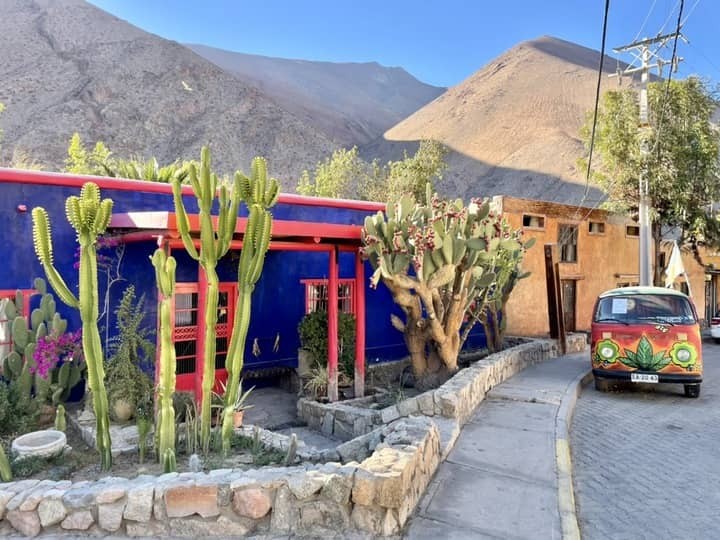 Pisco Elqui in Valle de Elqui, Chile, showcasing the clear skies and tranquil environment
Pisco Elqui in Valle de Elqui, Chile, showcasing the clear skies and tranquil environment
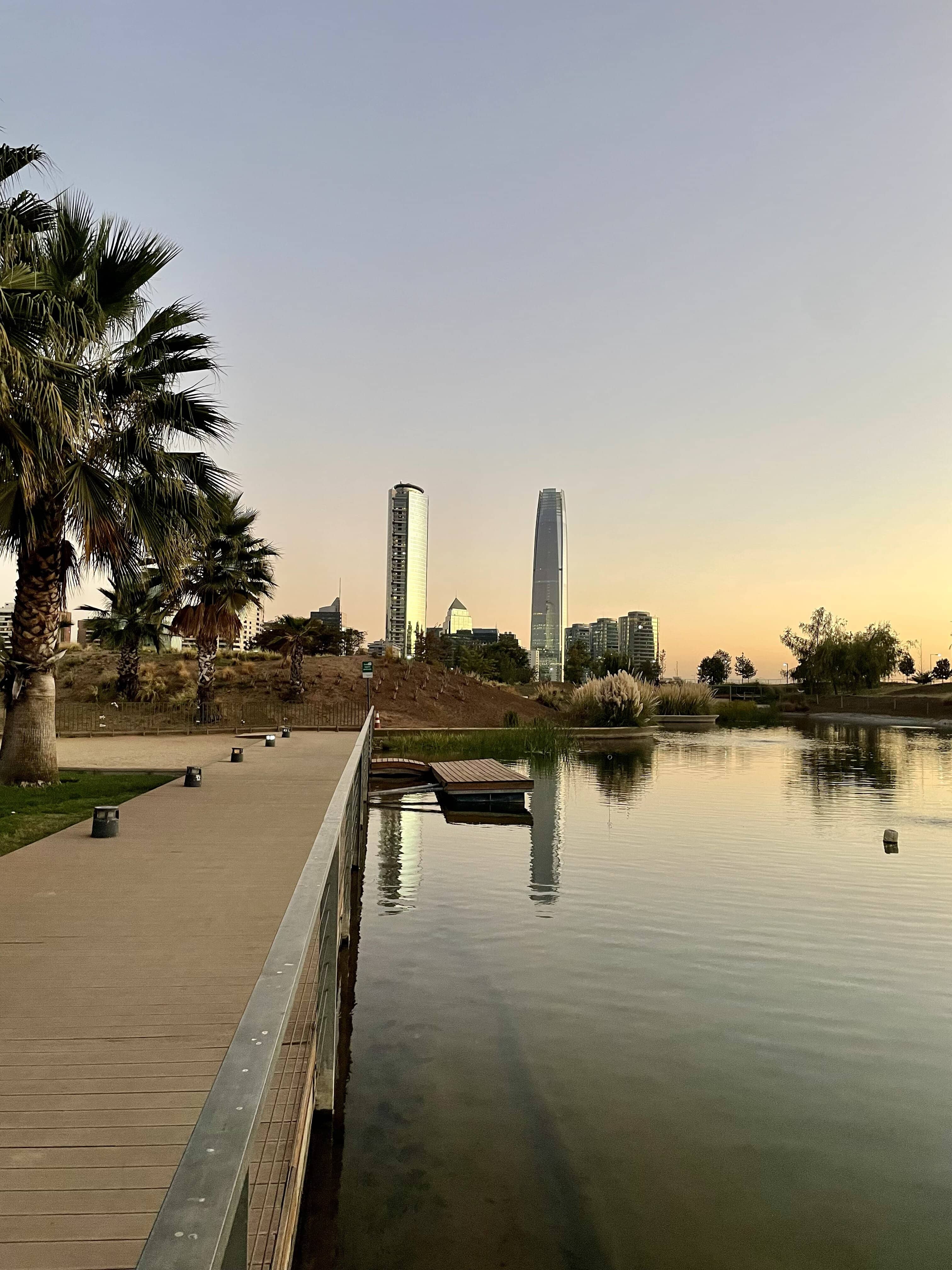 Bicentenario Park in Vitacura, Santiago, Chile, highlighting the lush greenery and modern cityscape
Bicentenario Park in Vitacura, Santiago, Chile, highlighting the lush greenery and modern cityscape
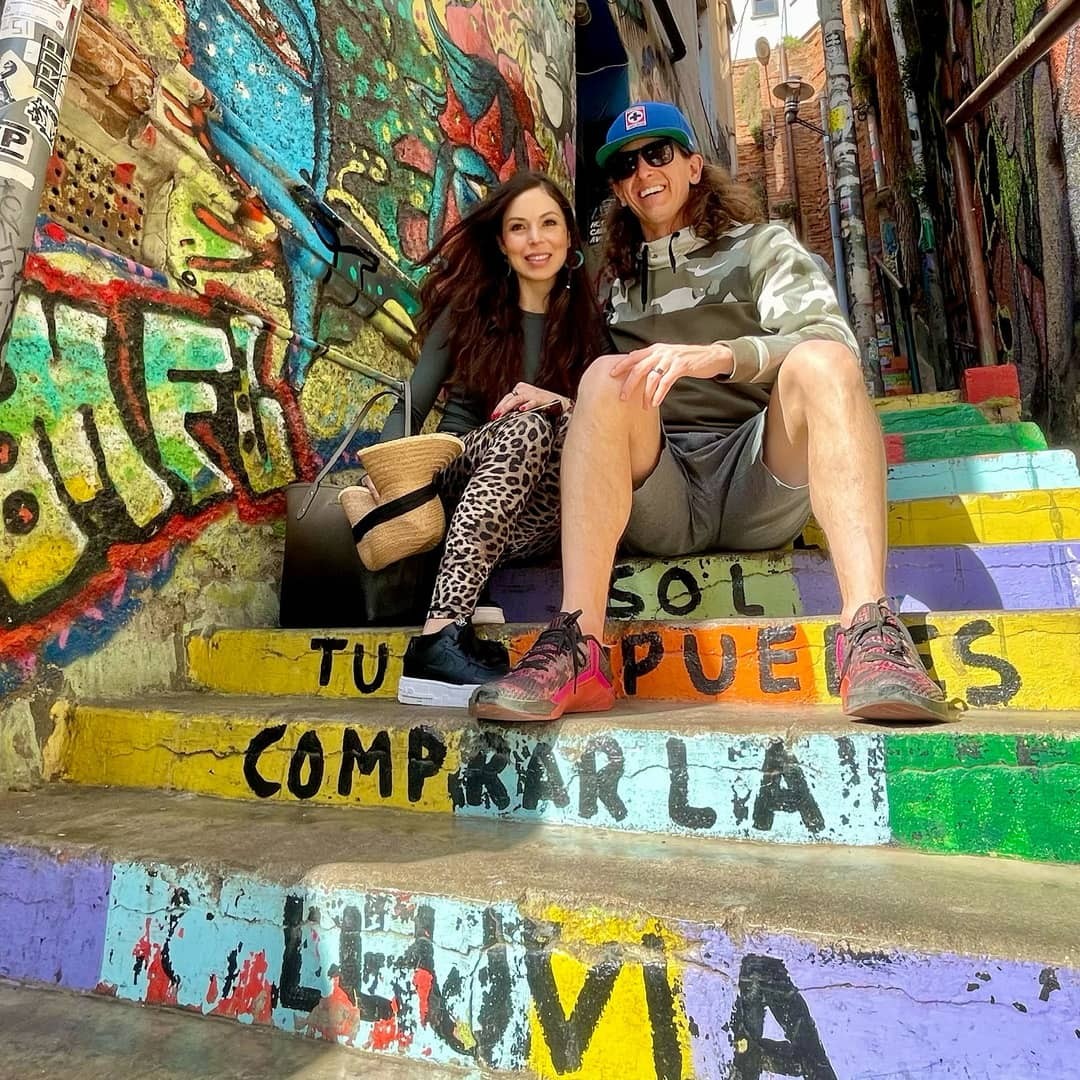 Colorful street art in Valparaíso, Chile, reflecting the city's vibrant and artistic culture
Colorful street art in Valparaíso, Chile, reflecting the city's vibrant and artistic culture
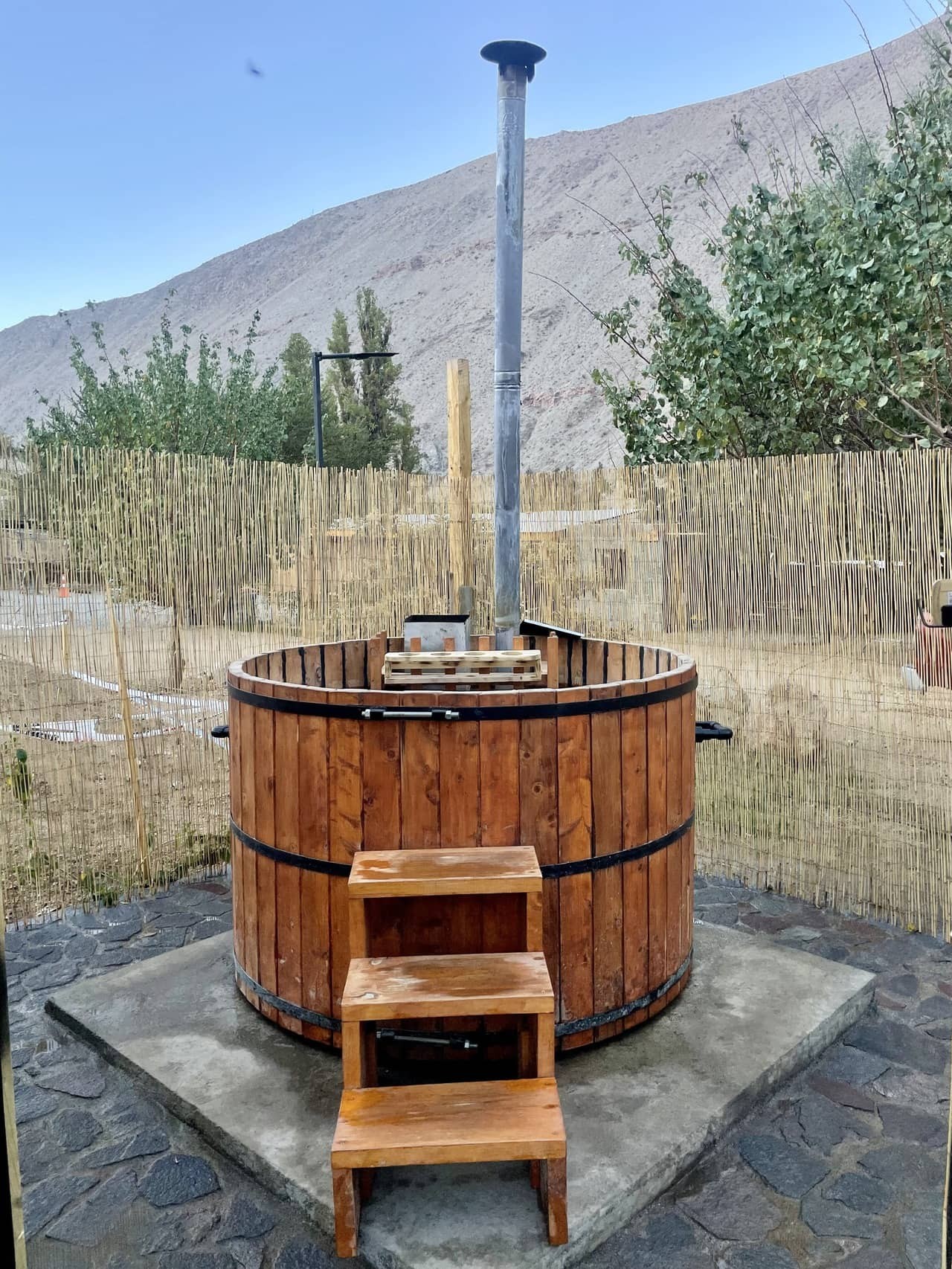 Traditional Chilean hot tub in Valle de Elqui, Chile, providing relaxation amidst scenic landscapes
Traditional Chilean hot tub in Valle de Elqui, Chile, providing relaxation amidst scenic landscapes
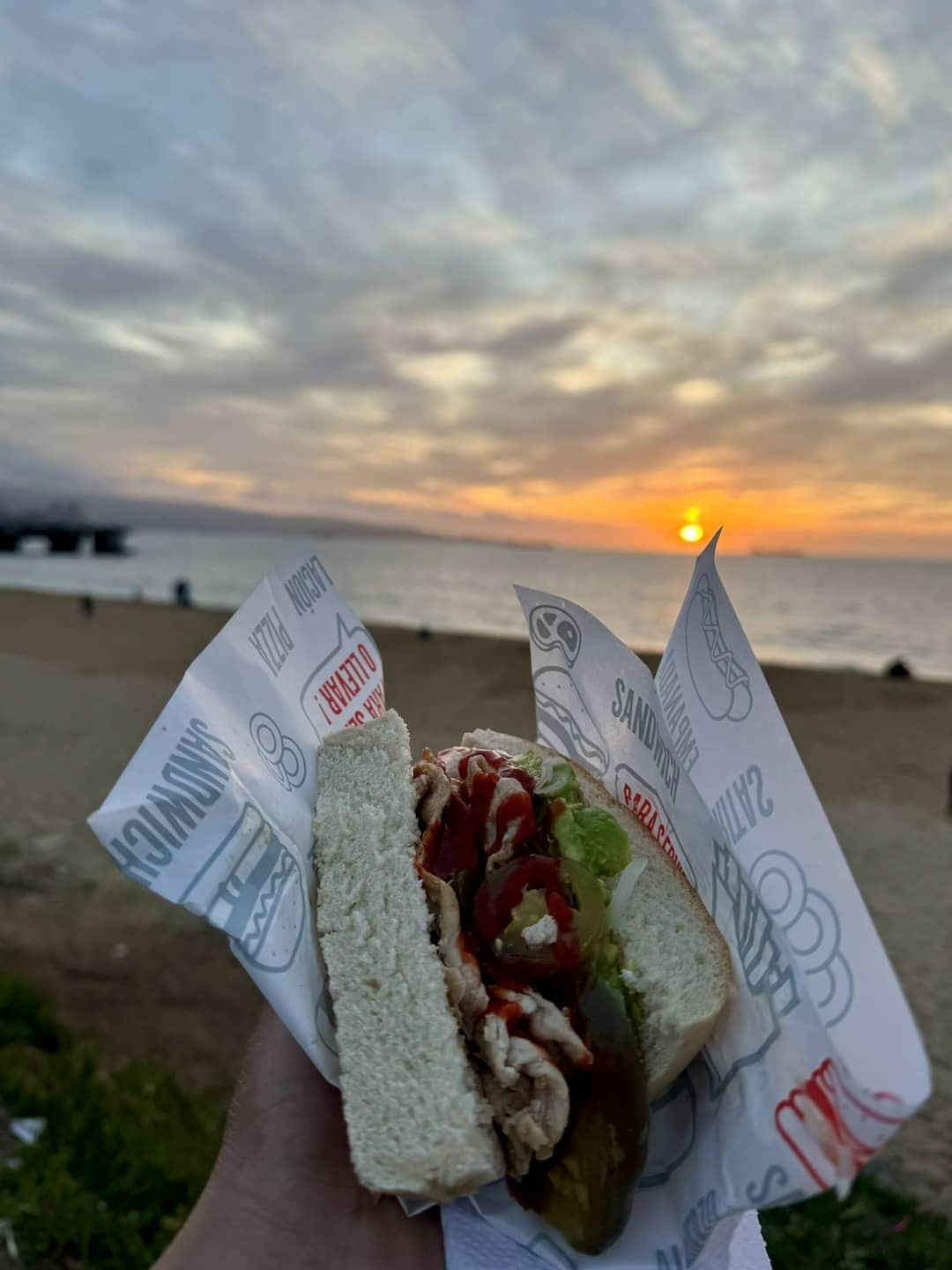 Chilean food in Viña del Mar, showcasing the diverse culinary offerings of the coastal city
Chilean food in Viña del Mar, showcasing the diverse culinary offerings of the coastal city
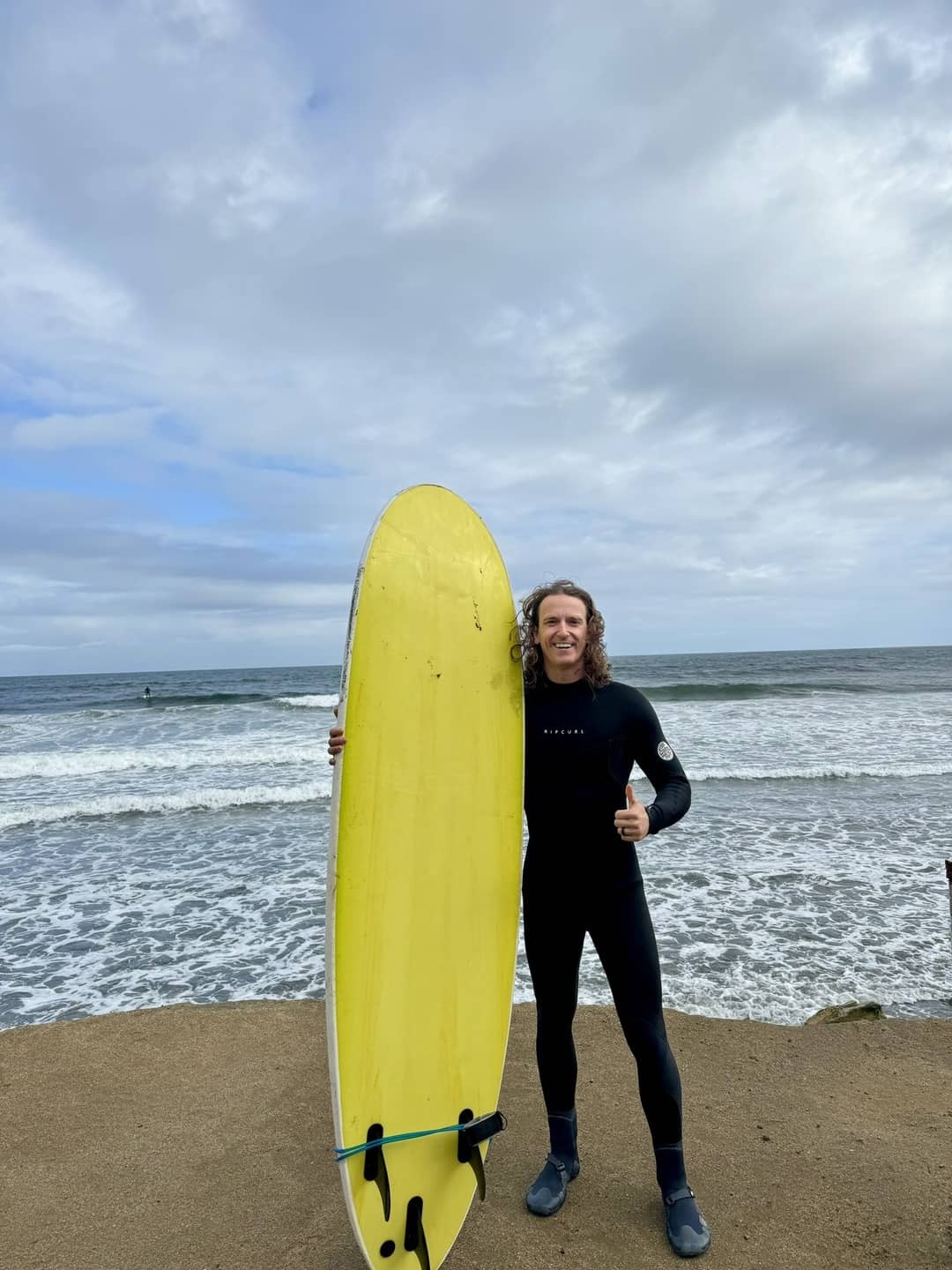 Surfing in La Boca, Concón, Chile, highlighting the coastal adventures available in the region
Surfing in La Boca, Concón, Chile, highlighting the coastal adventures available in the region
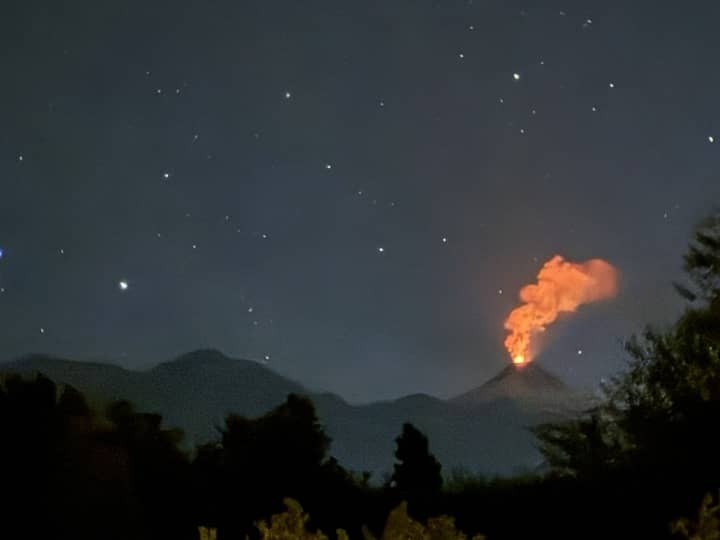 Villarica volcano in Chile, illustrating the country's diverse natural landscapes
Villarica volcano in Chile, illustrating the country's diverse natural landscapes
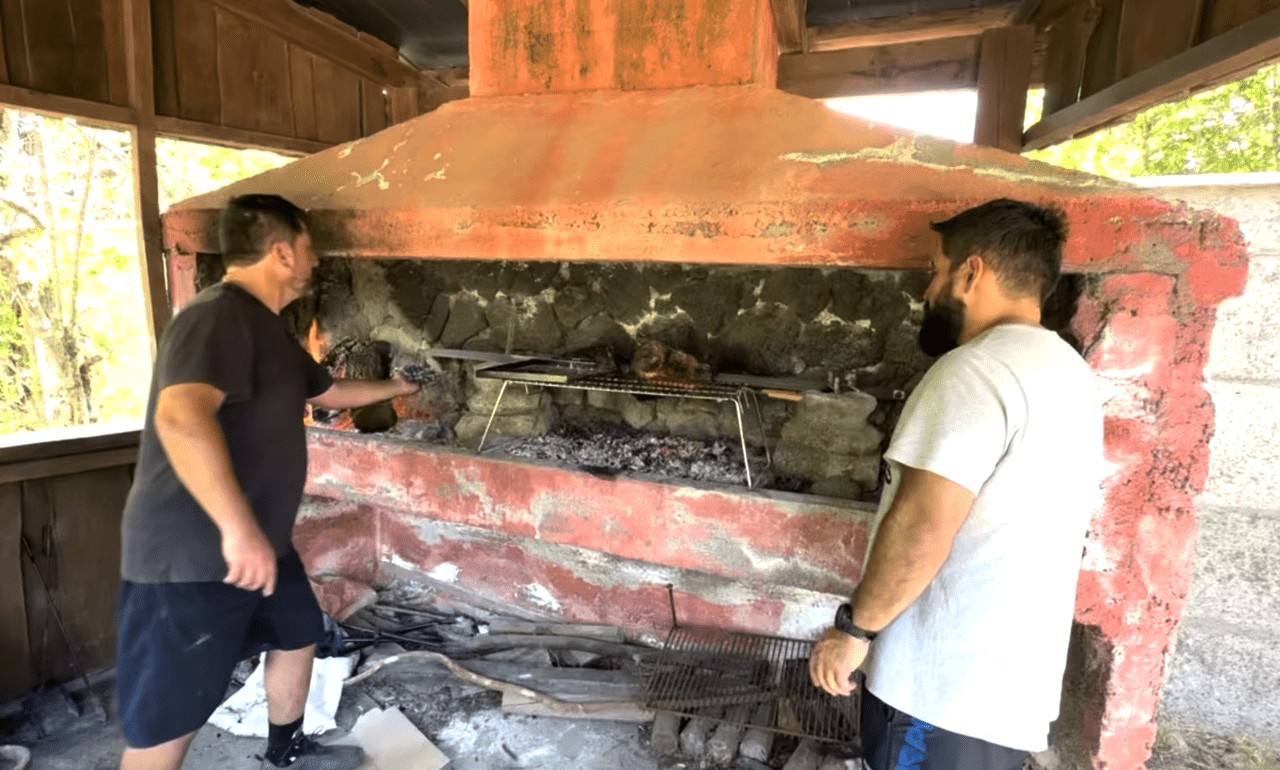 Traditional Chilean Asado, displaying the country's rich culinary heritage
Traditional Chilean Asado, displaying the country's rich culinary heritage



